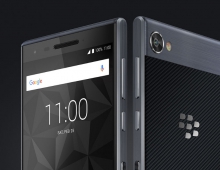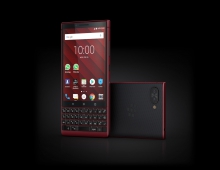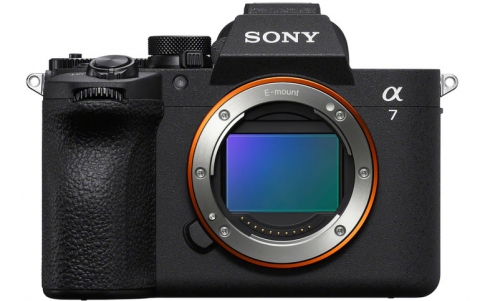
BlackBerry Bold Doubles Screen Resolution
Research In Motion on Monday is introducing its first major new BlackBerry model in more than a year: the Bold, a high-end model aimed at the company's core base of business users, but it hopes the sleek device will also catch on in the broad retail market.
The Bold, or 9000, has twice the screen resolution of the current Curve model (half VGA 480x320), making for a very sharp display. It matches the resolution, but not the size, of the screen on Apple's iPhone, which has emerged as a potent competitor in the "smart phone" category.
It also has much more internal memory (1GB), a glossy metallic look, and adds corporate-strength Wi-Fi capabilities to third-generation cellular and Bluetooth radios. A 2-megapixel camera with video recording capability and a media player for watching movies and managing music collections are also included. Equipped with support for tri-band HSDPA and quad-band EDGE (which means that it will support the highest-speed GSM-family data networks wherever they are available worldwide), stereo Bluetooth, and both assisted and autonomous GPS, the Bold could prove a formidable challenger to Apple's next-gen iPhone on connectivity alone.
Otherwise it stays close to the formula of the Curve, with a horizontal screen above a trackball and a keyboard with one letter per key.
RIM didn't announce a price for the Bold bit it is expected to cost between $300 and $400. AT&T will be its lead carrier in the United States.

The initial model would support GSM networks, the kind employed by AT&T Inc. and T-Mobile USA. Later models could work on the Sprint Nextel and Verizon Wireless networks, according to RIM co-chief executive Mike Lazaridis.
Like the Curve and the Pearl, BlackBerry's consumer-oriented phones, the Bold has a full-size headset jack and a camera that can also capture video. At the same time, it has dual-band Wi-Fi, a feature previously only found on a model aimed at the corporate market.
The Bold will also have exchangable back plates in different colors, a first for a BlackBerry.
It also has much more internal memory (1GB), a glossy metallic look, and adds corporate-strength Wi-Fi capabilities to third-generation cellular and Bluetooth radios. A 2-megapixel camera with video recording capability and a media player for watching movies and managing music collections are also included. Equipped with support for tri-band HSDPA and quad-band EDGE (which means that it will support the highest-speed GSM-family data networks wherever they are available worldwide), stereo Bluetooth, and both assisted and autonomous GPS, the Bold could prove a formidable challenger to Apple's next-gen iPhone on connectivity alone.
Otherwise it stays close to the formula of the Curve, with a horizontal screen above a trackball and a keyboard with one letter per key.
RIM didn't announce a price for the Bold bit it is expected to cost between $300 and $400. AT&T will be its lead carrier in the United States.

The initial model would support GSM networks, the kind employed by AT&T Inc. and T-Mobile USA. Later models could work on the Sprint Nextel and Verizon Wireless networks, according to RIM co-chief executive Mike Lazaridis.
Like the Curve and the Pearl, BlackBerry's consumer-oriented phones, the Bold has a full-size headset jack and a camera that can also capture video. At the same time, it has dual-band Wi-Fi, a feature previously only found on a model aimed at the corporate market.
The Bold will also have exchangable back plates in different colors, a first for a BlackBerry.




















